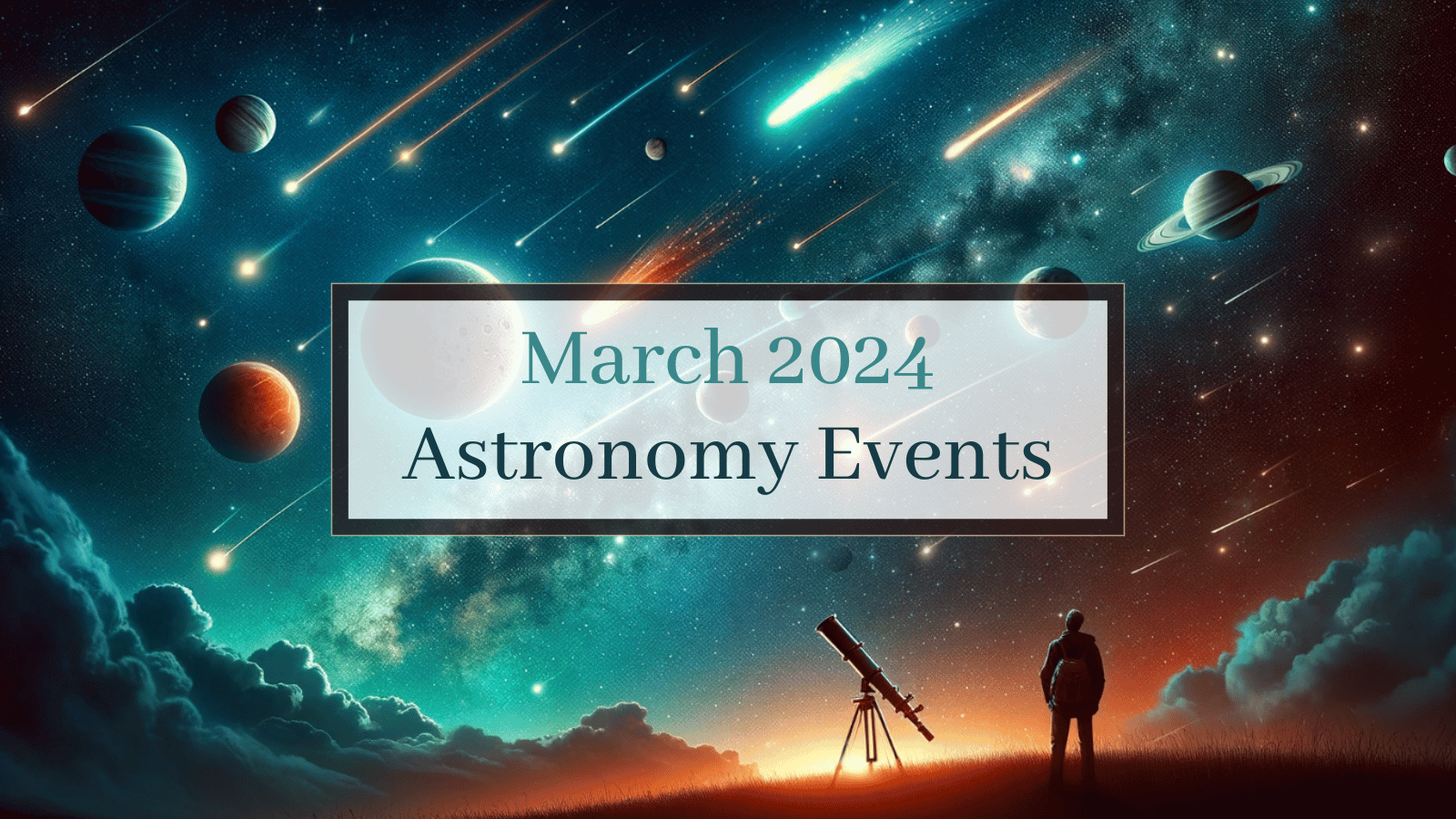March skies are brimming with celestial events that promise to captivate stargazers and astronomy enthusiasts alike. From the opposition of asteroids 3 Juno and 23 Thalia, offering a unique glimpse into the asteroid belt's wonders, to the balance of day and night during the March Equinox, the cosmos invites us to witness the harmony and dynamics of our universe.
Mercury's greatest eastern elongation will dazzle in the twilight, while the Full Moon and a subtle penumbral lunar eclipse will illuminate the night, revealing the intricate dance between Earth, the Moon, and the Sun.
The month culminates with the opposition of the distant dwarf planet 136472 Makemake, showcasing the diversity of objects that share our solar system. Join us as we explore the marvels of March's night sky, each event a chapter in the unfolding story of our celestial surroundings.
Seven Spectacular Celestial Events in March 2024
- 3/3: Asteroid 3 Juno at opposition
- 3/12: Asteroid 23 Thalia at opposition
- 3/19: March Equinox
- 3/24: Mercury at greatest eastern elongation
- 3/25: Full Worm Moon
- 3/25: Penumbral Lunar Eclipse
- 3/30: 136472 Makemake at opposition
March 2024: Key Celestial Events to Mark on Your Calendar
March 3rd: The Night of Asteroid 3 Juno's Grand Opposition

On the night of March 3rd, the cosmos invites us to witness a mesmerizing spectacle as Asteroid 3 Juno enters opposition, cradled by the Leo constellation, and majestically present above the horizon for an extended period. This astronomical phenomenon ensures that 3 Juno will climb to its highest point in the sky around the stroke of midnight, local time, for observers anywhere on Earth.
In a harmonious celestial dance, 3 Juno will also draw nearer to Earth than at any other time during its orbit, reaching its perigee, illuminating the night sky with unparalleled brilliance. This enhanced visibility stems from a perfect linear arrangement of 3 Juno, Earth, and the Sun, with our planet nestled in the middle, directly in line with 3 Juno on the opposite side of the Sun.
At this closest approach, 3 Juno will be just 1.687 Astronomical Units away from us, glowing at a peak magnitude of 8.6. However, despite its intensified brightness, 3 Juno's subtlety escapes the naked eye, requiring the aid of binoculars or a telescope with a moderate aperture for those eager to observe this dim yet captivating asteroid.
Juno on 3/3
- Magnitude: +8.6
- Right ascension: 10h54m40s
- Declination: 4°22'N
- Constellation: Leo
March 12th: The Stellar Showcase of Asteroid 23 Thalia in Opposition

On March 12th, the night sky is set to deliver an exceptional spectacle with Asteroid 23 Thalia making a grand appearance. Positioned within the majestic Leo constellation, Thalia will command the heavens, remaining prominently visible above the horizon for the majority of the night. Regardless of your geographical location on Earth, you will observe Thalia ascending to its zenith in the night sky around the magical hour of midnight.
This prime viewing opportunity is due to Thalia entering a phase known as opposition, where it aligns directly opposite the Sun from our perspective on Earth. As the Sun sets to its lowest point below the horizon at midnight, Thalia will seize the moment to radiate its brightest directly overhead.
Simultaneously, Thalia approaches its nearest point to Earth, known as perigee, enhancing its luminosity against the nocturnal canvas. This striking visibility arises from a perfect cosmic alignment, with Thalia, Earth, and the Sun forming a straight line, and Earth positioned centrally.
At this pivotal moment, Thalia will venture as close as 1.163 Astronomical Units (AU) to our planet, achieving a luminance of magnitude 9.7. Despite this peak in brightness, Thalia's glow remains elusive to the unaided eye. To truly appreciate the beauty of this dim asteroid, enthusiasts will require the assistance of binoculars or a telescope of moderate size.
Thalia on 3/12
- Magnitude: +9.7
- Right ascension: 11h57m30s
- Declination: 20°04'N
- Constellation: Leo
March 19th: The Spring Equinox - A Global Day of Balance
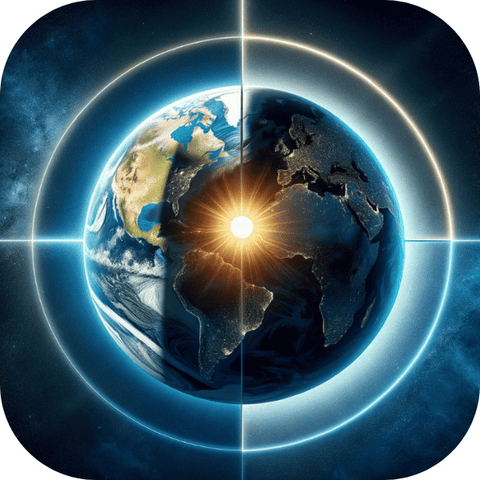
The March equinox signals the arrival of spring in the Northern Hemisphere and autumn in the Southern Hemisphere, setting a unique stage where day and night grace the Earth with nearly equal presence on March 19th. This balance of light and darkness occurs as the Sun crosses the celestial equator during its annual passage through the zodiac constellations. The term "equinox" itself melds the Latin words for "equal" (aequus) and "night" (nox), highlighting this day of harmonic equilibrium.
On the equinox, no matter where you are on the globe, the Sun will obediently rise from the due east and settle in the due west. This phenomenon stems from the Earth's axis, which tilts at an angle of 23.5° relative to its orbital plane around the Sun. Despite the Earth's annual journey, the orientation of its spin axis remains steadfast in space, aligning the Earth's perspective of the Sun with the zodiacal backdrop in a celestial dance that brings about the changing seasons.
During the equinox in March, the Sun aligns with a right ascension nearly hitting zero, marking a moment of cosmic alignment defined by the Sun's center at equinox time. However, due to the Earth's gyroscopic motion, this alignment isn't perfectly static. The equinox points gradually shift across the sky by about 50 arcseconds annually, a subtle reminder of our planet's dynamic posture in the vastness of space.
Sun crossing the equator on 3/19
- Angular Size: 32'07"
- Right ascension: 23h58m
- Declination: 0°08'S
- Constellation: Pisces
March 24th: Mercury's Brilliant Evening Display at Its Greatest Eastern Elongation
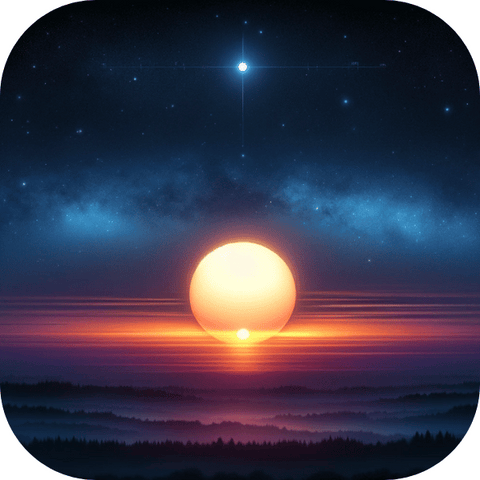
On March 24th, Mercury will mark a highlight in its Mar-Apr 2024 evening appearance, achieving its maximum distance from the Sun. This event, known as its greatest elongation, will showcase Mercury shining with a brightness of magnitude -0.3. However, as the apparition progresses towards its conclusion, Mercury will dim swiftly as it approaches its inferior conjunction, a phase where it aligns between Earth and the Sun. During this alignment, Mercury presents its dark side towards Earth, appearing as a delicate, faintly lit crescent.
Observing Mercury can be particularly challenging due to its proximity to the Sun, which confines it to the twilight hours. This makes its slender crescent phase especially hard to spot. As a result, Mercury will be more visible and easier to observe in the days leading up to its peak elevation rather than the days following. Given its orbit's closer vicinity to the Sun compared to Earth's, Mercury remains near the Sun in the sky, often obscured by the Sun's bright glare.
Mercury is visible for just a brief period each time it reaches its greatest separation from the Sun, during what are termed its greatest elongations. These opportunities to view Mercury recur approximately every 3-4 months, alternating between the morning and evening skies, depending on whether Mercury is positioned to the east or west of the Sun. When east of the Sun, Mercury sets shortly after sunset, gracing the early evening sky. Conversely, when it is west of the Sun, it rises just before sunrise, making it visible in the early morning twilight.
Mercury on 3/24
- Angular Size: 7.5"
- Magnitude: -0.3
- Right ascension: 01h20m40s
- Declination: 11°04'N
- Constellation: Pisces
March 25th: The Luminous Full Worm Moon Ushers in Spring

On March 25th, the Moon will illuminate the night sky in its full phase, becoming a beacon of light from dusk until dawn. This phase occurs precisely when the Moon's ecliptic longitude is 180° opposite the Sun's ecliptic longitude, as viewed from Earth's center. While the exact moment of the full moon doesn't visually distinguish it from other times during its full phase, it's a spectacle that can be admired throughout the night.
The full moon of March is traditionally known as the Worm Moon, a name that evokes the image of earthworms emerging in the spring soil. This moniker has long been thought to symbolize the return of earthworms to the surface as the ground thaws, heralding the rejuvenation of spring.
Full Worm Moon on 3/25
- Angular size: 29'27"
- Right ascension: 12h19m00s
- Declination: 1°01'S
- Constellation: Virgo
- Distance from Earth: 251,655 miles
March 25th: The Subtle Glow of the Penumbral Lunar Eclipse
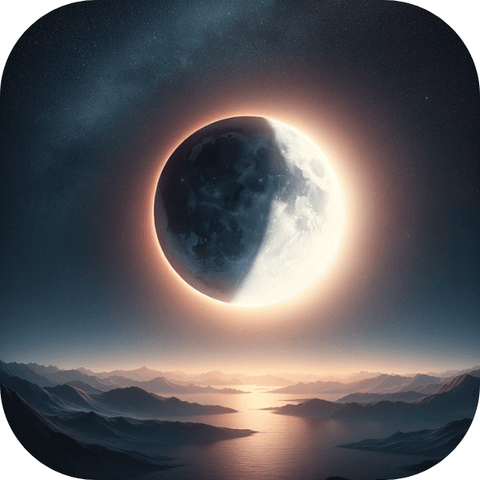
On March 25th, a subtle yet captivating celestial event will unfold as the Moon glides through Earth's shadow, resulting in a penumbral lunar eclipse from 12:53am to 5:32am ET. This eclipse will be observable from any location where the Moon is above the horizon during these hours, including the Americas, Antarctica, Alaska, and northeastern Russia, with the peak of the eclipse happening at 3:13am ET.
Penumbral lunar eclipses occur when the Earth positions itself between the Moon and Sun, casting its shadow over the Moon. However, penumbral eclipses are notably more subtle than their partial or total counterparts. In this type of eclipse, the Moon traverses the Earth's penumbral shadow, which is the outer portion of the shadow where the Earth blocks some but not all of the Sun's rays. This results in a slight dimming of the Moon's surface, as the Sun's light is only partially obscured.
The March 25th eclipse is exceptional because the entire face of the Moon will pass through the Earth's penumbra, making the dimming of the Moon's brightness more noticeable than in typical penumbral eclipses. These total penumbral lunar eclipses are rare occurrences, primarily because once the Moon is entirely within the penumbra, it often enters the umbra (the central part of Earth's shadow), leading to a partial lunar eclipse. The visual effect of the March eclipse will be subtle, detectable mainly to those with sharp eyesight or through the lens of a camera set up for the occasion.
March 30th: A Glimpse of Distant Makemake in Opposition
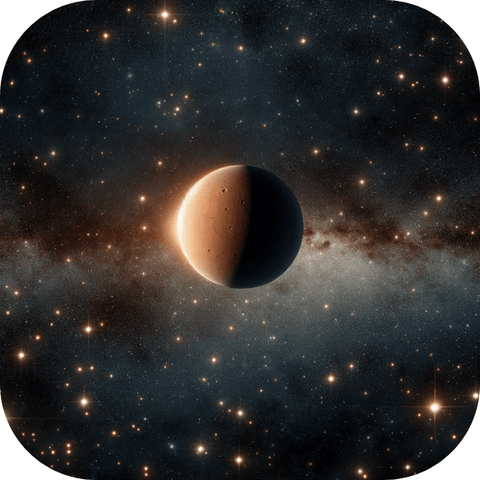
On March 30th, the dwarf planet 136472 Makemake will be perfectly aligned in opposition, facing directly away from the Sun and nestled in the constellation Coma Berenices. This alignment ensures that Makemake will be prominently visible for a large portion of the night, culminating at its zenith in the sky around midnight local time. This event coincides with its perigee, or closest approach to Earth, enhancing its luminosity in our night sky. This increased visibility occurs as Earth positions itself between Makemake and the Sun during opposition.
Despite this, it's important to note that Makemake orbits far beyond Earth, at an average distance from the Sun 45.31 times greater than that of Earth, leading to only minimal variations in its brightness through its orbit. Thus, while Makemake will be observable throughout much of the night—rising and setting in opposition to the Sun, and peaking at around midnight—it remains a challenge to discern more than a star-like point of light through a telescope due to its vast distance from us. At its opposition, Makemake will stand 51.79 Astronomical Units (AU) from Earth, reaching a maximum brightness of magnitude 17.1, highlighting the dwarf planet's remote and enigmatic nature.
Makemake on 3/30
- Magnitude: +17.1
- Right ascension: 13h21m50s
- Declination: 21°48'N
- Constellation: Coma Berenices
Elevating Your Stargazing Journey
With this newfound understanding of the celestial highlights awaiting you in the night sky this month, you're perfectly poised to enhance your stargazing adventures. While many of these astronomical wonders are visible to the naked eye, the addition of a high-quality pair of binoculars or an advanced telescope can profoundly enrich your experience.
For those looking to start or upgrade their astronomical toolkit, our curated selection offers everything you need. From top-tier binoculars and telescopes to essential accessories, our range features products from the most respected brands in the industry. Discover the beauty of the night sky with our premium optics, all available at competitive prices through our online store.
Dive into our collection of telescopes or explore the enhanced viewing capabilities of our astronomy binoculars.
If you find yourself hesitating over the array of options, we're here to assist. Visit our blog for insightful articles like "Choosing the Perfect Telescope". With the right equipment in hand, you're all set for an extraordinary journey across the cosmos, making each stargazing session more memorable than the last.


